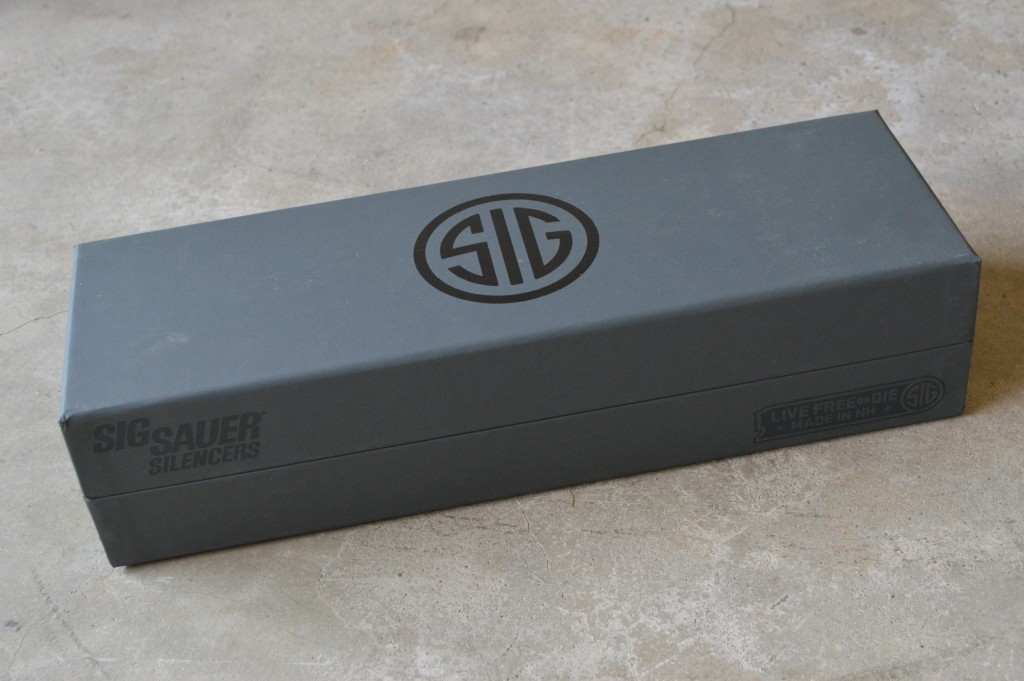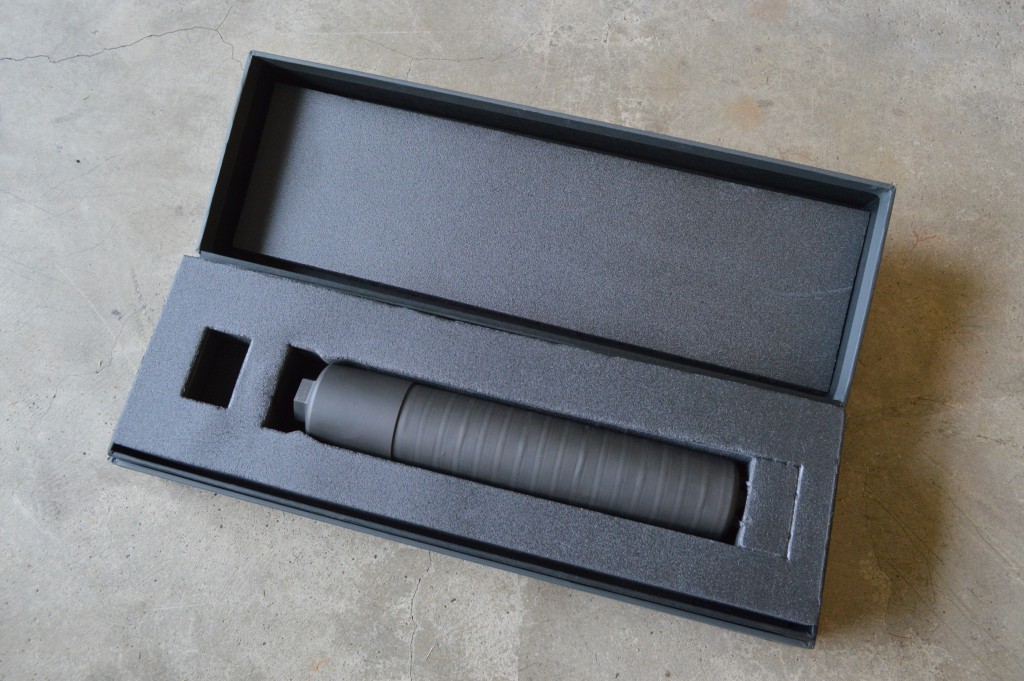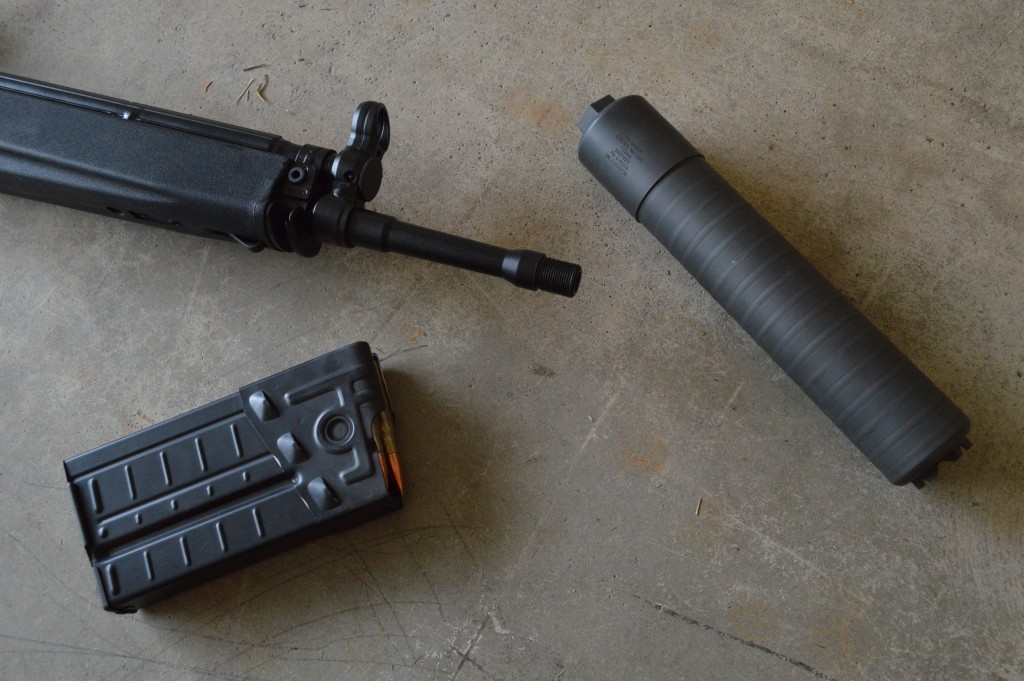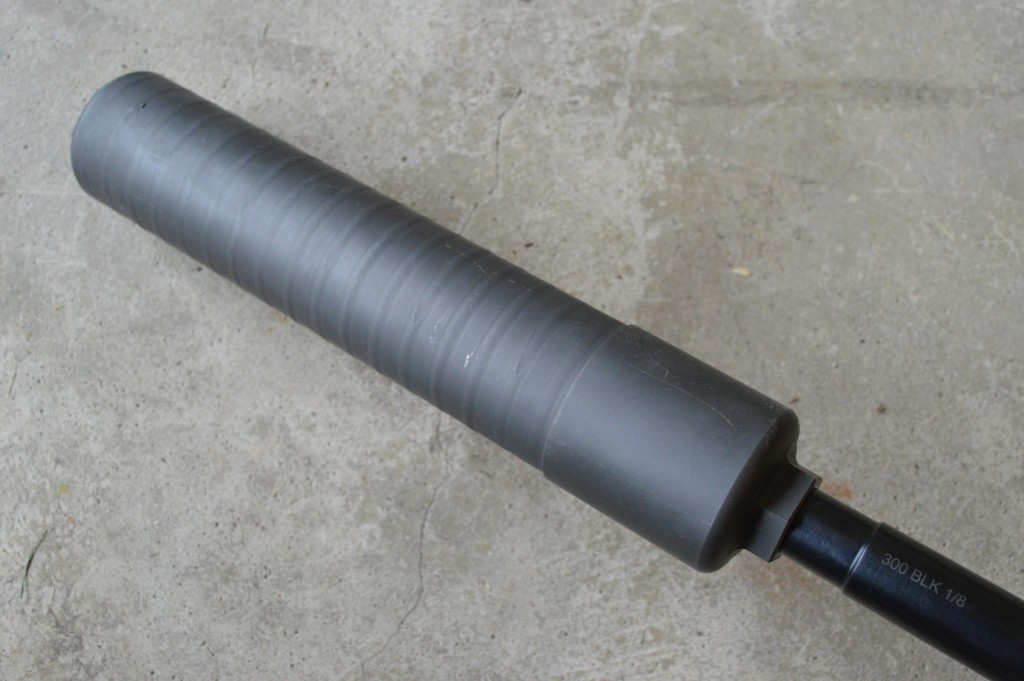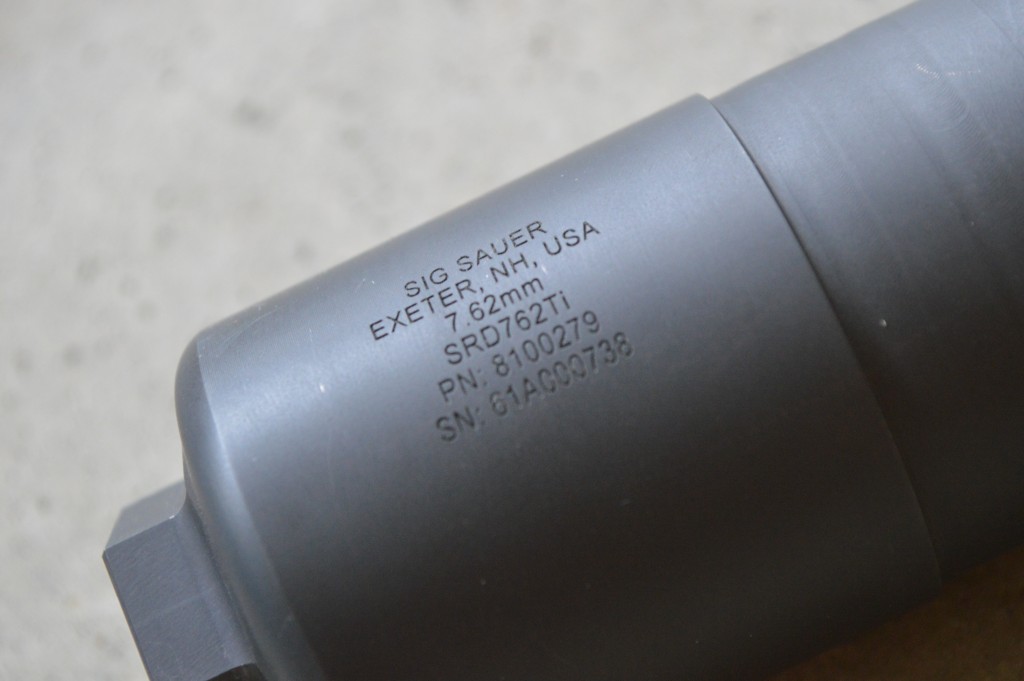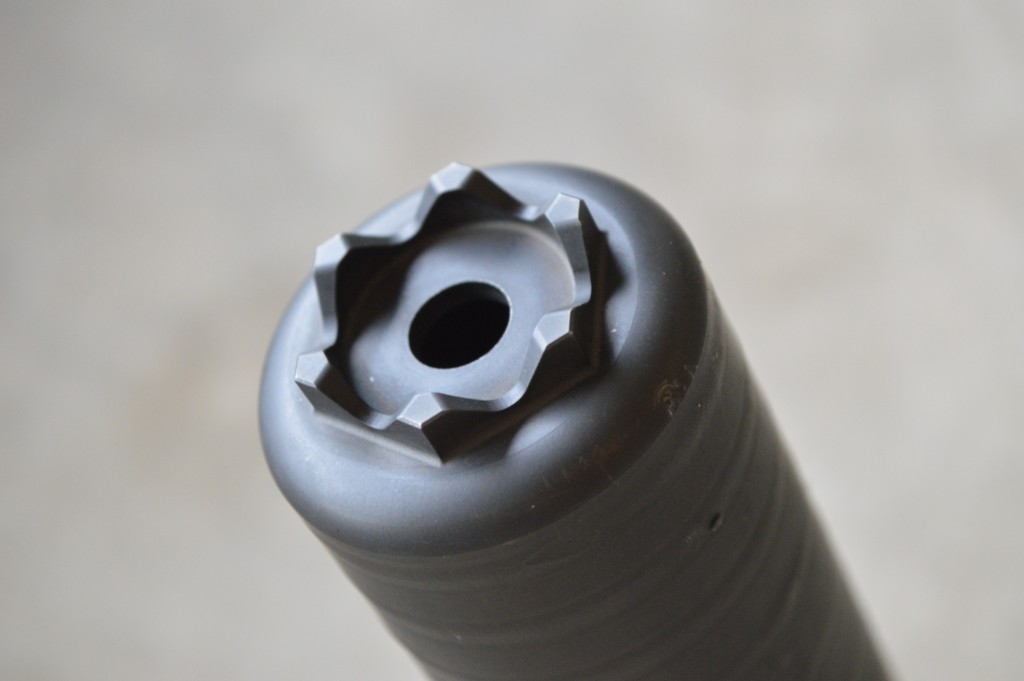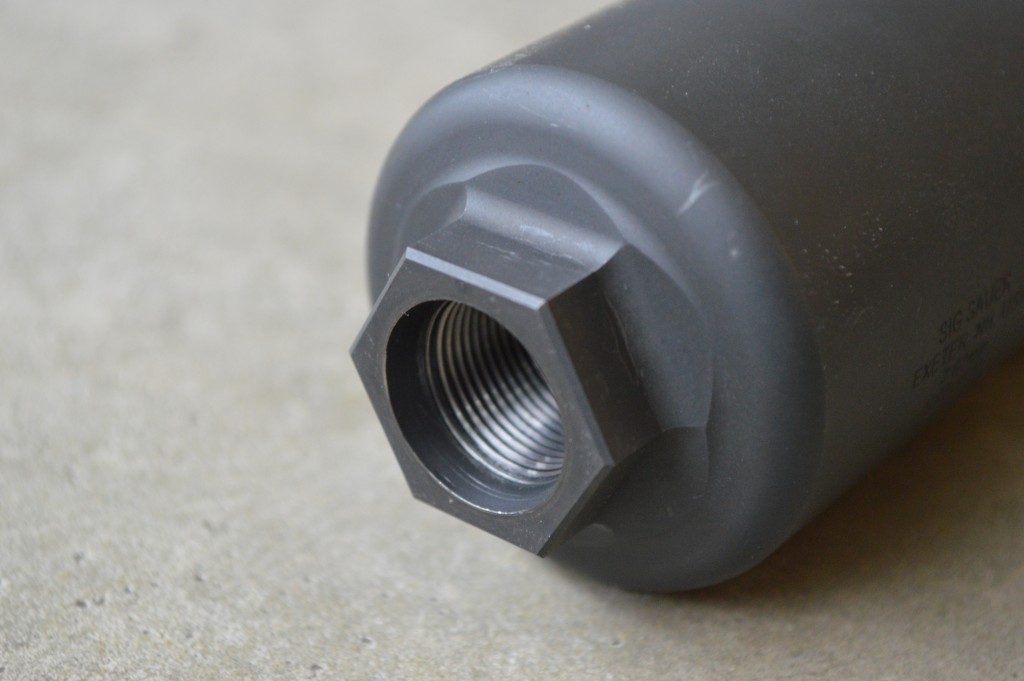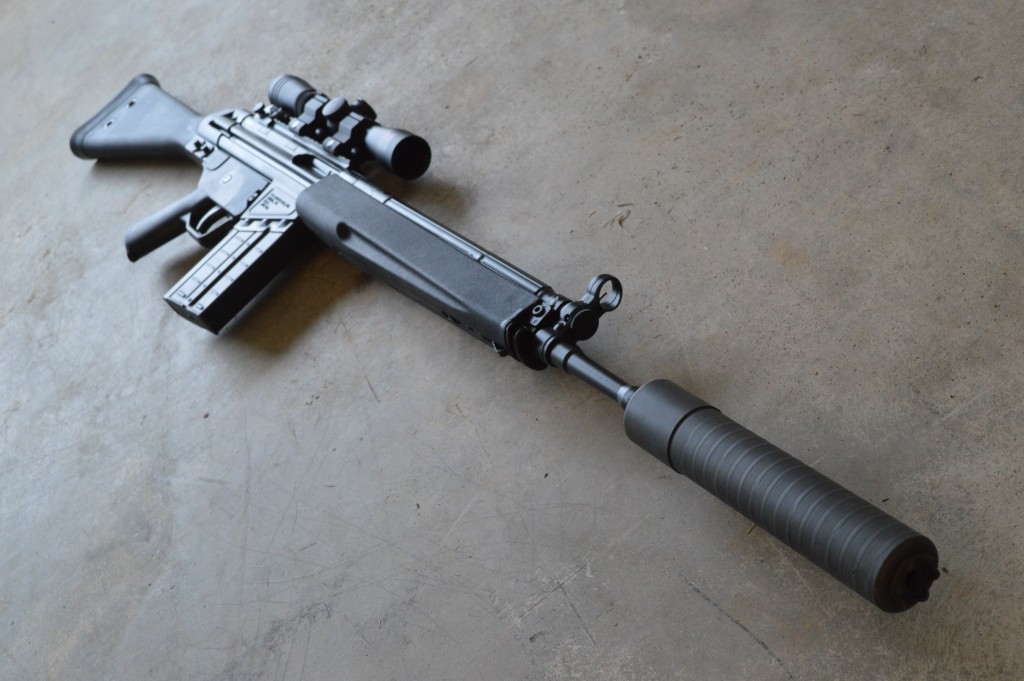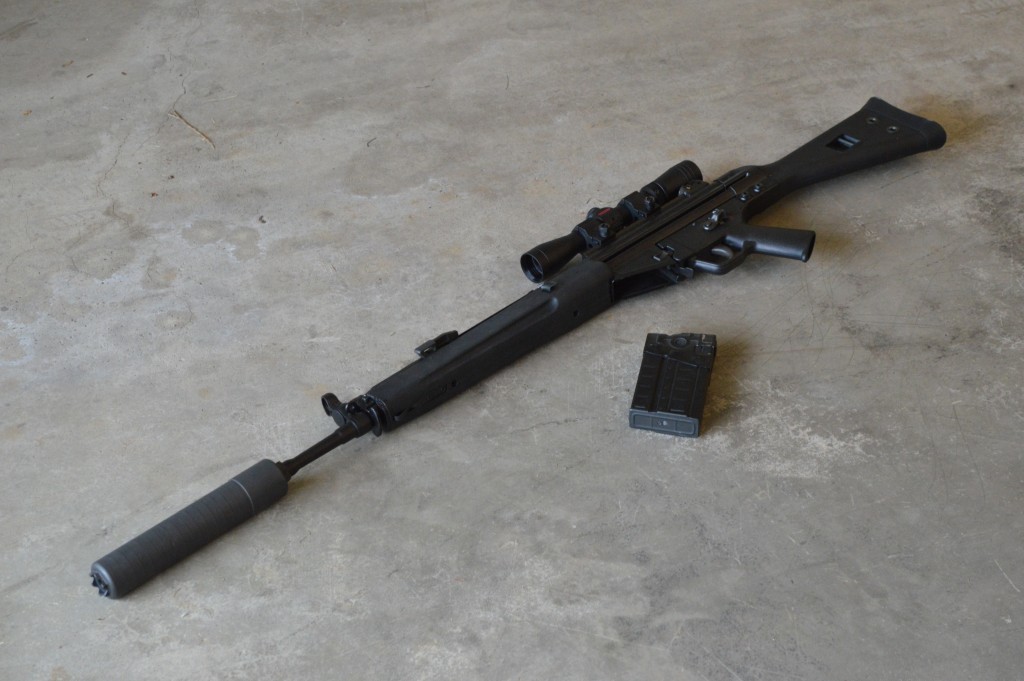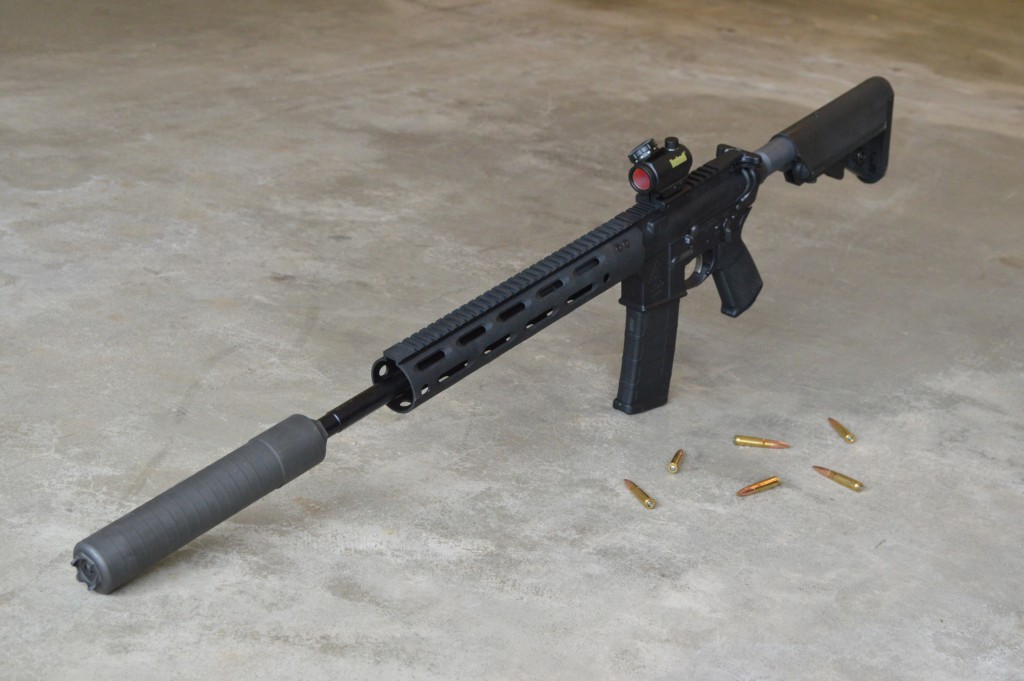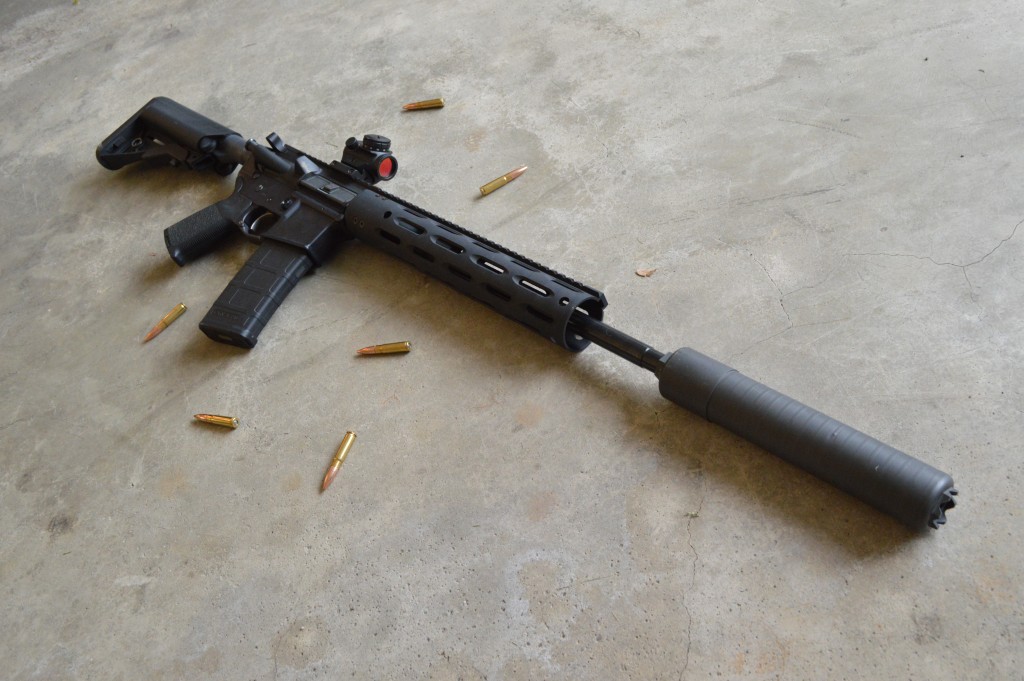Silencer Shop Authority: SIG SRD762Ti Review
When silencer veterans Kevin Brittingham (now with his new company, Q) and John Hollister joined on at SIG back in 2014, most of us with ties to the industry took notice. Previously the masterminds behind Advanced Armament’s rise to dominance, their enrollment with a company not at all known for its suppressors, was both puzzling and very exciting. SIG planned to get serious about suppression, but many of us were skeptical.
It didn’t take long for SIG to have a full line of cans ready to show off. At SHOT 2015, the company previewed its new lineup of SRD-branded rifle, pistol, and rimfire suppressors. The showing was impressive, but then the silencers themselves were mostly unobtainable until very recently.
Though it took a while for SIG silencers to trickle to dealers, early feedback has been very positive, especially for their rifle models. With that in mind, I was eager to try a few of the suppressors. After reaching out to my friends at Silencer Shop, I had the chance to spend a few weeks with the new titanium SRD762Ti.
Size & Weight
If other .30 caliber suppressors are Campbell’s regular soup cans, the SRD762Ti is the Chunky soup variety. It is just a bit bigger in every way than most of its rivals. Most notably, the SRD is 1.75” in diameter, instead of the category standard 1.5”. It is also rather lengthy at 9.25” from the threads to the aggressively styled end cap.
Even though the SRD762Ti is large in overall volume, it doesn’t weigh all that much. Sure, there are lighter titanium silencers out there, but at 18.4 ounces, SIG’s silencer isn’t unreasonable. Moreover, since the SRD is a thread mount suppressor, it doesn’t require specialized muzzle devices that often weigh as much as three ounces. In terms of total system weight, what you see is what you get.
Materials & Design
Along with being a little wider than other .30 caliber silencers, the SRD is also unique because it is tubeless. Most rifle suppressors feature welded baffle stacks that have then been dropped inside a steel or titanium tube and welded in place. In truth, most designs don’t require the reinforcement of this outer shell, which adds significant weight. Furthermore, tubeless designs are fairly common internationally, especially in places where suppressors are less stringently regulated.
In forgoing an outer tube, SIG essentially took a bunch (and I mean a bunch) of their conical, ported baffles and welded them to spacer rings. They then welded these spacer rings together to create the suppressor. The serialized portion of the silencer is the machined blast chamber, which also houses the silencer’s 5/8-24 threaded interface. The manufacturing process gives the SRD762Ti an interesting striped appearance, but since the silencer features no tube, SIG should have no problem repairing even the most severe damage.
I briefly mentioned the baffles, but they’re worth some more attention. Inside SIG’s can sit several conical baffles, each made of Grade 5 titanium. These baffles feature stepped ports in their boreholes, which are known to create turbulence inside the silencer and aid in performance. Near the outskirt of each baffle, there are also two small, round ports. Most importantly, these serve to reduce backpressure.
The SRD’s large footprint is kept manageable by the fact that the can is made entirely out of titanium. While 18.4 ounces isn’t what most people would consider lightweight, the silencer would be far heavier if it had been made using stainless steel or one of the other popular, high-density alloys. That’s why SIG’s stainless .30 caliber suppressors are a good bit smaller than their titanium models. The smooth, gray finish on the outside of the SRD762Ti is a Physical Vapor Deposition (PVD) treatment like the kind used on Beretta’s sand-resistant magazines. TiN bolt carrier groups are also treated in a similar manner. The result of which is a slick, durable, and temperature-resistant finish.
As I noted in a previous paragraph, the SRD762Ti is a 5/8-24 direct thread suppressor. However, SIG’s thread specifications are slightly different than most of their competitors. Starting with their new MCX and MPX lines, SIG has begun to add tapered shoulders to their barrels. These shoulders mate with tapered faces inside their silencers and mounts to assist with proper alignment and firm lockup. If you’re using the SRD on a standard barrel, there’s no need to worry as it will snug against normal shoulders as well. However, I do think SIG’s tapered shoulders are smartly designed, and I would like to see the feature catch on with other manufacturers. Lastly, the SRD features hexagonal flats on its rear cap that can be used with a 22mm wrench (unfortunately, 19mm armorer’s wrenches won’t work) to torque the silencer to the host weapon. In my range testing, the SRD only started to come loose once when mounted to my PTR-91. I’ll blame that on operator error, and the silencer sustained no damage.
Range Report
As a general rule, I often have trouble assessing the true performance of .30 caliber silencer with .308 ammunition. While the sound reduction is certainly there, .308 is even less friendly from a suppression standpoint than .223 or supersonic .300 BLK. Even so, the SRD762Ti made my PTR-91 A3R more enjoyable to shoot for a variety of reasons, beyond the obvious audible advantage.
The one thing that did surprise me was when another shooter from a few benches over came down to check out the rifle and suppressor. He was amazed by the performance and though I haven’t seen .308 meter numbers for the SRD, I think it’s safe to say that the can is on par with other top-performers, like Rugged’s Surge.
The SRD762Ti also generates less backpressure than any other .30 caliber suppressor I have ever used. This is important in a few ways. First, it means less wear on host rifles. Even with the tuned #17 locking piece in my PTR, most silencers significantly increase the rifle’s bolt speed. The SRD was much kinder to my shoulder, and with it mounted, I managed the first 1 MOA group I’ve ever achieved with that particular firearm. Secondly, low backpressure means less port noise. As the gas travels back through the barrel/gas system and into the action, it often finds its way out through the ejection port. This great escape leads causes the rifle to sound louder to shooters than it would if all of the gas exited through the muzzle. Port noise, especially on my .300 BLK AR-15, was minimal with the SRD.
Now that we’re talking about .300 BLK, we’ve moved on to where I think the SRD762Ti really shines. On my Radical Firearms .300 BLK upper, SIG’s suppressor was ridiculously quiet. I used the can with both American Eagle’s 220-grain suppressor load and Remington’s 220-grain subsonic and found both to be very quiet. Military Arms Channel’s testing has revealed that the SRD is a 121 dB suppressor one meter from the muzzle, which earns it top honors in the .300 BLK field; but comparisons between different test environments are of dubious utility. Still, I do think that the SRD’s large diameter is most advantageous with low-pressure cartridges like .300 BLK where escaping gasses move slower and are more efficiently captured by the suppressor.
Conclusion
There’s really no denying the fact that thread mount silencers simply don’t have the sex appeal that quick attack designs possess. However, that doesn’t mean they don’t come with some inherent advantages. While quick attach cans typically rely on proprietary muzzle devices for mounting – accessories that could end up discontinued down the line – thread mount suppressors often use established thread patterns that are universally recognized.
For those who are open to a thread mount suppressor, the SRD762Ti offers top-of-class performance and reasonably light weight. It is a bit larger in terms of volume than some of its rivals, but the space seems well used and at the range, I never really felt like the can was unwieldy.
Shooters who want top-end suppression and are open to direct thread silencers can find SIG’s SRD762Ti for between $850 and $900 at Silencer Shop. Actual pricing will vary by dealer.
An information security professional by day and gun blogger by night, Nathan started his firearms journey at 16 years old as a collector of C&R rifles. These days, you’re likely to find him shooting something a bit more modern – and usually equipped with a suppressor – but his passion for firearms with military heritage has never waned. Over the last five years, Nathan has written about a variety of firearms topics, including Second Amendment politics and gun and gear reviews. When he isn’t shooting or writing, Nathan nerds out over computers, 3D printing, and Star Wars.

